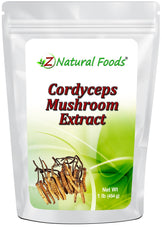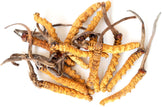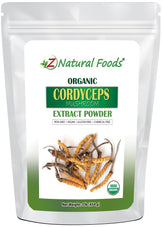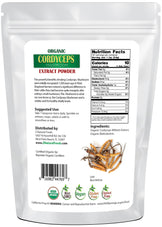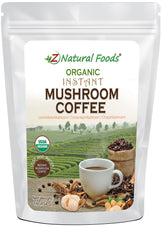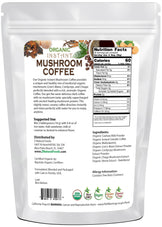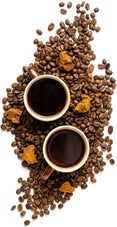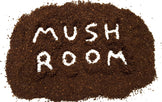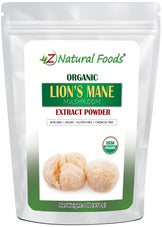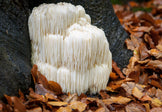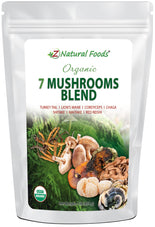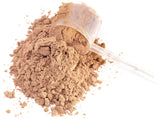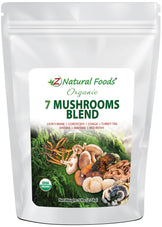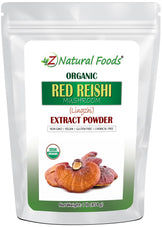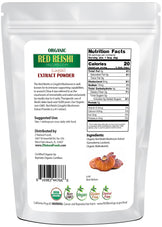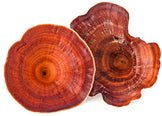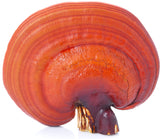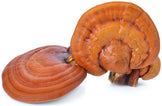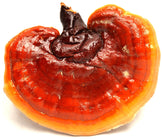Description
Description
To answer the question, “Does cordyceps mushroom powder work?” correctly, it is vital to understand:
- How do we evaluate the effectiveness of any substance we use, and
- If there is a specific criterion for how an individual should assess their progress and results.
Let’s run through a couple of well-known but brief examples and then dig into our cordyceps question.
Does cordyceps mushroom powder work?
Yes, cordyceps mushroom powders work. Similar to other medicinal mushrooms, Cordyceps is full of bioactive compounds. As an adaptogen and tonic, cordyceps is believed to support vitality and performance, strengthen the body and mind, and support a healthy stress response.
For our first example, the average individual consumes stimulants like caffeine daily because it effectively boosts energy levels for a short period.
FYI, a cup of coffee or tea differs significantly from using caffeine as an isolated compound because coffee and tea contain nourishing polyphenolic compounds that provide great nourishment.
For our other example, pharmaceuticals are also fast-acting isolated compounds created to have a specific targeted approach through particular mechanisms of action with a somewhat predictable result.
Taking two Advil or Tylenol to reduce pain oftentimes does just that in 30 minutes or less. As individuals, we may each respond slightly differently, but …
The bottom line is they both work, but at what cost?
Modern medicine has proposed that “side effects” are an essential part of the evaluation process.
Many scientists believe that side effects are a productive way to evaluate the effectiveness of a pharmaceutical, and for a good reason. A side-effect is defined as an adverse or rare effect outside of the primarily targeted effect, but side effects are still effects.
Therefore, what medicine calls side effects may be very typical for some people and are actually effects that are supposed to occur based on our individual responses. Because the average individual consumes both stimulants and prescription pharmaceuticals daily, we expect to feel a significant effect in order to declare that a substance is genuinely compelling.
This has skewed our perspective on what is realistic and healthy.
Let's now be more specific with our cordyceps topic and look at what we believe is a healthy way to evaluate the level of effectiveness of natural substances like food, herbs, and medicinal mushrooms.
Because we are all different regarding where we are physically and emotionally, it is challenging to provide specific guidelines.
For example, Traditional Chinese Medicine (TCM) evaluates an individual based on their current physical and mental well-being according to TCM principles, and things may change significantly between acupuncture treatments and herb consultations.
Therefore, the practitioner will change the treatment protocol to balance any excesses or deficiencies based on where the patient is at that time.
Still, to answer the question about whether or not cordyceps work, there are some golden rules you should consider following to keep things in perspective.
- Medicinal mushrooms, herbs, and food do not work like pharmaceuticals or isolated compounds because they contain a complex of natural compounds that work synergistically, potentially supporting a more balanced and subtle result. They work on multiple mechanisms of action, whereas isolated compounds tend to focus on one.
- Everyone is in a different place mentally, physically, and emotionally; these factors consistently change based on many aspects of your lifestyle. Therefore, these factors may change the timeframe and outcome of your results.
- Our society uses caffeine-based beverages like coffee, tea, and energy drinks, providing a powerful and effective short-term burst of energy. Therefore, this skews our perspective into believing everything should work quickly and be as powerful.
- Concentration levels of a product are essential when looking at appropriate dosing and evaluating time frames and overall results. So, be aware of how strong of a concentration your product provides.
Next, to recognize if cordyceps work, it is vital to understand the principles behind tonic herbalism, where cordyceps play a significant role.
Tonic herbalism is a complex system that looks at these six vital factors:
- Oneness and the unity of everything: Humans, nature, organs, and the mind and body all function as one.
- Yin and Yang: Opposing forces within the whole.
- The three treasures: Jing(The essence of life), Shen(The core of emotions stored in the heart), and Qi(The circulating life force)
- The four seasons: Adapting to seasonal changes synchronizing with nature’s yin/yang.
- The five elements theory: The world is made up of the fundamental elements metal, wood, water, fire, and earth, all of which create cyclical changes.
- The Chinese Organ System: In TCM, organ systems go beyond the boundaries of anatomy. All organs are integrated units based on circulation, utilization of Qi, and how it manifests.
Whether it is TCM or Western herbal medicine, there are vital distinctions between medicinals and tonics:
- In simple terms, Tonics are made to be taken daily over a lifetime to build and restore, so plenty of reserves exist.
- A medicinal formula is often used only long enough to help reinstate balance. If used longer than necessary, they begin to pull from the body and potentially cause a new deficiency or excess imbalance.
Cordyceps mushrooms
Researched for its ability to support vitality and performance, strengthen the body and mind, and support a healthy stress response, this elite-level Jing tonic and superstar of the mushroom world is categorized as an actual adaptogen and revered by tonic herbalists worldwide.
Sweet in flavor and warm in temperature, cordyceps is famous in TCM for nourishing both Yin and Yang, supporting the kidneys and lungs, supporting life capacity and life force reserves, and is considered a fantastic tonifier of QI.
You won’t have to search far to see that cordyceps is regarded as one of the greats in Traditional Chinese Medicine, right next to Ginseng, Reishi, Deer Antler, and Schizandra.
Cordyceps is a treasure trove of bioactive compounds like all other medicinal mushrooms.
Some of the primary ones which have been researched and thought to create cordycep's “life-supporting” effects are:
- Nucleosides
- Polysaccharides
- Sterols
- Amino Acids
- Polypeptides
- Cordycepin
The articleChemical Ingredients of Cordyceps Militaris looked at the breakdown and concentration levels of various predominate compounds found in cordyceps. It was stated,
“The adenosine concentration was 0.18% in the fruiting body and 0.06% in the corpus. The cordycepin concentration was 0.97% in the fruiting body and 0.36% in the corpus. There were differences in adenosine and cordycepin contents between the fruiting body and the corpus of C. militaris. The adenosine and cordycepin concentration in the fruiting body was approximately three-fold higher than in the corpus. The adenosine concentration was lower than the concentration of cordycepin.”
A double-blind, placebo-controlled study using 28 individuals examined whether acute and chronic supplementation of cordyceps improves tolerance to high-intensity exercise.
- “ One week of supplementation elicited no significant time × treatment interaction for VO2max.”
- “After three weeks, VO2 max significantly improved. Analysis of 95% confidence intervals revealed significant improvements with additional improvements in VO2 max.”
Therefore, it was concluded, “Acute supplementation with a cordyceps militaris containing mushroom blend may improve tolerance to high-intensity exercise; greater benefits may be elicited with consistent chronic supplementation.”
Cordyceps: A True Adaptogen
Adaptogens are a supportive tool for managing a healthy stress response through nonspecific physiological reactions.
What makes all adaptogens unique is their ability to adapt to the harsh conditions in which they are grown. This adaptability allows them to thrive and become robust plants.
As the research on adaptogens has been compiled over the years, herbalists and scientists have learned and concluded how each adaptogens energy (warming, cooling, drying, moistening) and constituents balance has allowed them to be used in a more specific targeted approach.
Medicinal mushrooms contain a wide array of nourishing compounds that work synergistically to support overall well-being. While all mushrooms have certain nutritive qualities in common, they also have unique attributes, allowing them to support and uniquely focus on individual systems.
Plants and fungi are often categorized based on their functional qualities. Unfortunately, many plants and fungi are called adaptogens even though they don’t fulfill the criteria that define an adaptogen.
So, to answer this question thoroughly, it is essential to understand the requirements for how an adaptogen is defined and how they work.
The following are primary points that define what a plant or fungi must do to be considered an adaptogen.
Adaptogens must:
- Be nontoxic at clinical dosage
- Increase the resistance of the hormonal and immune systems to all kinds of stressors through a nonspecific physiological response.
- Normalize body function no matter how external stressors have altered them.
We have learned that what makes plants and fungi an actual adaptogen is that they must work through one or both of the body’s master control systems:
- The HPA Axis (Hypothalamic-Pituitary-Adrenal Axis) is a complex system of neuroendocrine pathways and feedback loops that maintain and support homeostasis in response to chronic stress. The HPA axis interfaces the endocrine, nervous, immune, digestive, reproductive, and cardio systems.
- The SAS (Sympatho Adrenal system, aka fight or flight) is a complex system that connects the sympathetic nervous system to the adrenal medulla. In simple terms, it is our fight-or-flight response. A triggered response floods our system with adrenalin and releases hormones epinephrine and norepinephrine from the adrenal medulla. This response increases blood pressure, blood sugar, and heart rate and suppresses digestion. This releasing of hormones and redistribution of blood allows the mind and body to respond and survive.
One final area that is essential to understand is the difference between mycelium versus fruiting bodies.
The above-ground portion of what is known as a mushroom is called the fruiting body.
In simple terms, the fruiting bodies are like an orange to an orange tree. This is the end stage of the life cycle and where the reproductive process occurs by releasing spores back into the environment and restarting the cycle. Fruiting bodies often exist for a few days before disappearing, representing about 5% of the process.
Because fruiting bodies have been the primary focus of research worldwide, they are believed to be the primary powerhouse portion of the fungi where all the nourishing compounds are found (each mushroom varying compounds).
For example, cordyceps contain a treasure trove of bioactive compounds like Nucleosides, Polysaccharides, Sterols, Amino Acids, Polypeptides, and Cordycepin. A review discussing mushroom compounds as immunomodulators concluded that their broad spectrum potential for supporting a healthy immune system response qualifies them as candidates for immune modulation and immunotherapy.
The underground portion of the fungi is called mycelium.
In simple terms, mycelium is biomass. Just as mushrooms are not mycelium, mycelium is not mushrooms. In this area of research, it is believed that all of the compounds found in a high concentration of the fruiting body (like polysaccharides) are not the only driving force behind what makes mushrooms such powerful tonic foods.
The working hypothesis behind mycelium research is that by consuming mycelium, you are ingesting the energy force or precursor for what creates the fruit itself. Mycelium is the primary plant portion of the mushroom and the longest-living part of the organism (95% of the life cycle). It is the underground communication system.
As more science emerges, we are learning about novel compounds in mycelium that may have the ability to change the face of modern medicine in unique ways. This area of mushroom science is fascinating for its unlimited potential. In a study discussing the potent immune-activating properties of turkey tail mycelium, the results demonstrated that “the immune-activating bioactivity of a mycelial-based medicinal mushroom preparation is a combination of the mycelium itself (including insoluble beta-glucans, and also water-soluble components), and the highly bioactive, metabolically fermented substrate, not present in the initial substrate.”
So, does cordyceps mushroom powder work?
In conclusion, yes, cordyceps mushroom powders do work.
While medicinal mushrooms all have similar general constituents (like a wide array of polysaccharides), attributes, and the ability to nourish in common, they are all unique in their own way.
Cordyceps mushrooms have a wonderfully rich usage history and are revered and respected worldwide as powerful tonics.
Because of their nourishing qualities, cordyceps have been, and will continue to be, the focus of research for many years to come. Their unique attributes, unlimited potential, and untapped information we are continuously learning are what make them very intriguing.
For more information about our organic cordyceps mushroom, go here:
Organic Cordyceps Mushroom Extract Powder
For more information about our cordyceps mushroom, go here:
Cordyceps Mushroom Extract Powder
For more information about all of our mushroom powders, go here:



